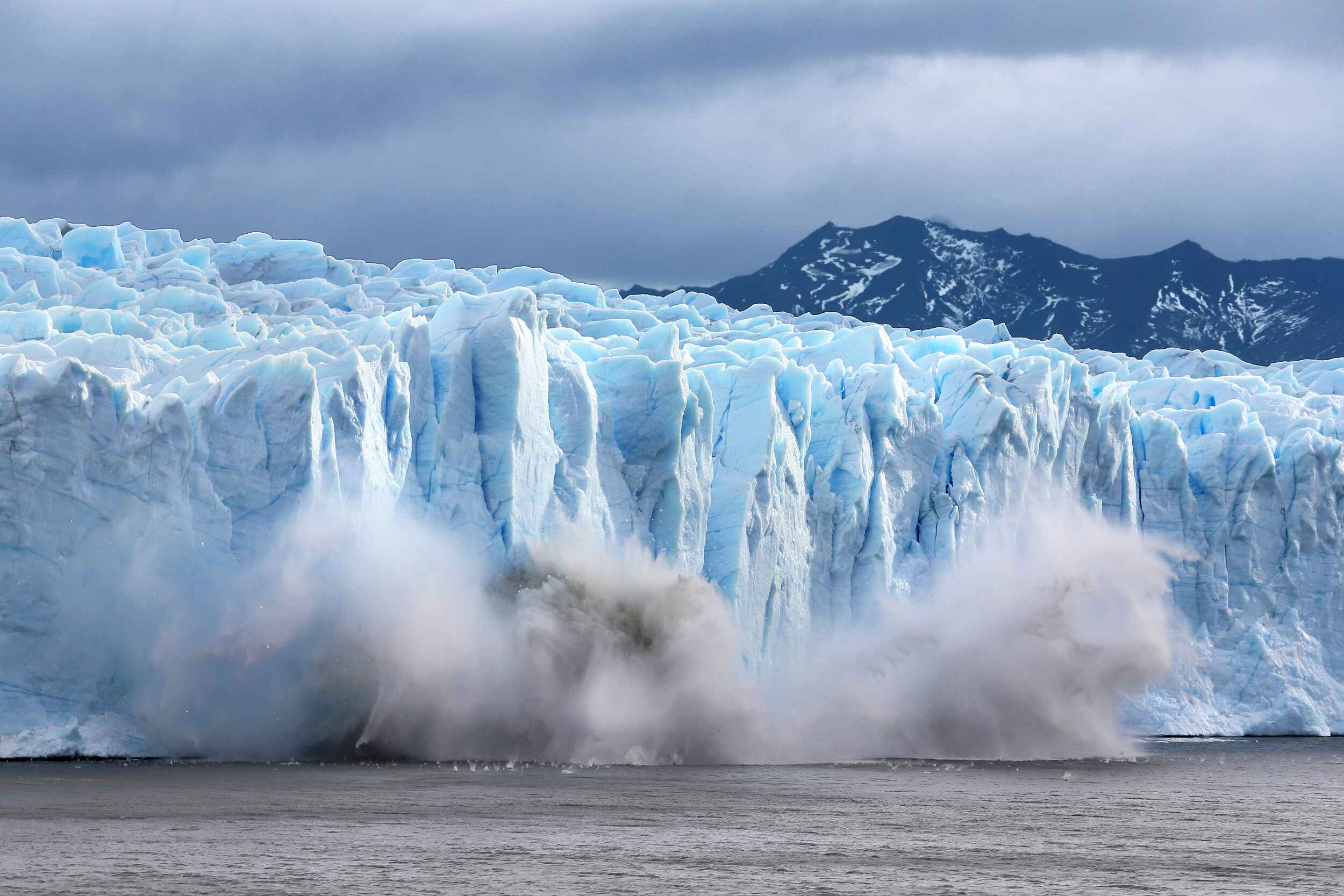
Glaciers are magnificent natural phenomena that have shaped the Earth’s landscape for millions of years. These massive ice formations are not only breathtaking to behold but also hold significant importance in terms of climate change and water supply. While most of us are familiar with the basics of glaciers, there are some surprising facts that you may not be aware of. In this article, we will uncover nine fascinating facts about glaciers that will leave you in awe of their beauty and power. From their ability to store freshwater to their impact on the global climate, glaciers are much more than just frozen ice. So, let’s dive into the world of glaciers and explore the hidden wonders they hold.
Key Takeaways:
- Glaciers are massive and slow-moving rivers of ice that store a huge amount of freshwater, create stunning ice caves, and even preserve historical artifacts, making them truly fascinating natural wonders.
- As glaciers melt, they contribute to sea level rise, impacting coastal areas. Despite their icy environments, glaciers are home to diverse wildlife, from seals and penguins to mountain goats and eagles.
The Largest Glacier is in Antarctica
Did you know that the largest glacier in the world is located in Antarctica? The Lambert Glacier spans over 60 miles wide and 250 miles long, making it larger than many countries!
Glaciers Store Massive Amounts of Water
Glaciers are not only majestic natural formations but also play a crucial role in the Earth’s water cycle. They store about 75% of the world’s freshwater, equivalent to more than 8,000 cubic miles of water!
Glaciers Create Breathtaking Ice Caves
One of the most awe-inspiring sights associated with glaciers are the incredible ice caves. These mesmerizing structures form inside glaciers as they melt and reshape, creating stunning blue-hued tunnels and caves that attract adventurous explorers and photographers.
Glaciers Move, but Not at a Fast Pace
Contrary to popular belief, glaciers do move, although at an incredibly slow pace. Their movement is a result of the force of gravity acting on the immense weight of the ice. Some glaciers move as little as a few inches per year, while others can progress a bit faster at several feet per day.
Glaciers Can Create Glacial Lakes
As glaciers move and melt, they can form depressions in the landscape, which eventually fill with water to form glacial lakes. These lakes are often crystal clear and have picturesque surroundings. One example is Lake Louise in Canada, known for its turquoise-colored water.
Glaciers Preserve Historical Artifacts
Glaciers have been unexpected custodians of history. Over the years, various relics, including centuries-old tools, weapons, and even human remains, have been discovered within glaciers. The ice acts as a natural preservative, keeping these artifacts intact until they are unearthed.
Glaciers Have Distinct Colors
Glaciers come in various shades, ranging from brilliant white to vibrant blue. The color of a glacier depends on several factors, such as the ice’s density and the presence of impurities. The mesmerizing blue hues are often a result of the way sunlight interacts with the ice crystals.
Glaciers Contribute to Sea Level Rise
As glaciers melt, they release water into the oceans, contributing to sea level rise. This gradual process has significant implications for coastal areas, leading to increased risks of flooding and erosion.
Glaciers are Home to Diverse Wildlife
Despite their cold and harsh environments, glaciers support a surprising array of wildlife. From seals and penguins in Antarctica to mountain goats and eagles in alpine regions, many animals have adapted to thrive in these icy habitats.
With these 9 surprising facts about glaciers, it’s clear that these natural wonders are not only breathtaking but also play a vital role in our planet’s ecosystem.
Conclusion
Glaciers are fascinating natural phenomena that play a crucial role in shaping our planet. They hold a wealth of surprises and secrets that continue to captivate scientists and explorers alike. From their immense size and ancient age to their impact on global climate, glaciers offer a multitude of intriguing facts. By delving into these 9 surprising facts about glaciers, we can gain a deeper understanding and appreciation for these icy giants that cover around 10% of the Earth’s land surface.
Whether it’s witnessing the mesmerizing shades of blue within a glacier’s ice or understanding the importance of glacial meltwater to our ecosystems, glaciers showcase the power and beauty of nature. By studying glaciers, we can uncover vital information about our planet’s history and gain insights into how they are being impacted by climate change.
Next time you encounter a glacier, remember that there is so much more to them than meets the eye. They are frozen wonders that hold clues to our past and offer glimpses into our future. Let us cherish and protect these majestic formations for future generations to marvel at.
FAQs
1. How are glaciers formed?
Glaciers are formed when snow accumulates over time in areas where the rate of snowfall exceeds the rate of melting. The weight of the accumulated snow compresses the lower layers, turning them into dense ice.
2. Can glaciers move?
Yes, glaciers can move. Due to the force of gravity, as the snow and ice accumulate, the weight causes the glacier to slowly flow downhill. This movement can be imperceptible or several meters per day.
3. How old can a glacier be?
Glaciers can be thousands to millions of years old. Some of the ice in glaciers dates back to the last ice age, which ended around 10,000 years ago.
4. What is glacial calving?
Glacial calving is when chunks of ice break off from the edge of a glacier and fall into the water, forming icebergs. It is a natural process that occurs as glaciers advance and retreat.
5. Do glaciers play a role in climate regulation?
Yes, glaciers play a crucial role in regulating global climate. They act as giant reflectors, reflecting sunlight back into space and helping to cool the Earth’s temperature.
6. Can glaciers disappear?
Yes, glaciers can disappear if the rate of melting surpasses the rate of snowfall and accumulation. Climate change is causing accelerated melting, leading to the loss of many glaciers worldwide.
7. Can glaciers contribute to sea-level rise?
Yes, the melting of glaciers contributes to rising sea levels. As glaciers melt, the water flows into the oceans, adding to the total volume of water and causing the sea level to rise.
8. Are all glaciers white?
No, not all glaciers are white. Some glaciers can appear blue due to the way that ice absorbs and reflects light. The presence of impurities or compressed ice can also give glaciers different colors.
9. Are there any glaciers in tropical regions?
Yes, there are glaciers in tropical regions. These are typically found on high mountains near the equator, where temperatures are cold enough for snow and ice to accumulate.
Glaciers are truly awe-inspiring, but there's even more to explore! Cirque glaciers, with their amphitheater-like shape, hold captivating secrets waiting to be revealed. Alaska's LeConte Glacier boasts fascinating characteristics that set it apart from others. Glacier Bay, a UNESCO World Heritage Site, is home to an abundance of glaciers and wildlife that will leave you craving more. Continue your journey through these icy wonders and uncover the mysteries they hold!
Was this page helpful?
Our commitment to delivering trustworthy and engaging content is at the heart of what we do. Each fact on our site is contributed by real users like you, bringing a wealth of diverse insights and information. To ensure the highest standards of accuracy and reliability, our dedicated editors meticulously review each submission. This process guarantees that the facts we share are not only fascinating but also credible. Trust in our commitment to quality and authenticity as you explore and learn with us.


